How do you keep pets warm in winter?
In winter, we like to wrap up, batten down the hatches and keep as warm and as cosy as we can.
Whether it’s drinking more hot chocolate than is healthy (or acceptable), snuggling under a blanket, or warming yourself next to a new designer radiator or log burning stove – we’ll do almost anything to avoid the winter chill.
But, even with their thick fur and glossy coats, our pets can suffer from the cold too.
From frostbite to hypothermia, pets are at risk from the elements during the winter months, so what can you do to help keep pets warm?
How Does Cold Weather Affect Our Pets?

Winter affects all of us in different ways, and it is no different for our pets.
When the temperature drops, it’s not unusual to see a range of behavioural changes in our pets and it’s easy to get worried about what the best course of action may be.
Below are a few changes you may notice in your pet during winter, and what you can do to help them get through the colder months unscathed.
Do Pets Want To Eat More When It’s Cold?
It’s not unusual for pets to have an increased appetite in winter.
This is because they need a little more energy to be able to regulate their body temperature.
You may think this means increasing the amount of food you give at meal times, but it’s important to not give too much, particularly if your pet isn’t very active.
It’s easy to overfeed a pet that doesn’t get around too much, so you need to be careful when upping their calorie count.
If you’re unsure of how much to increase your pet’s calorie intake in winter, speak to your vet.
They Become Heat Seekers
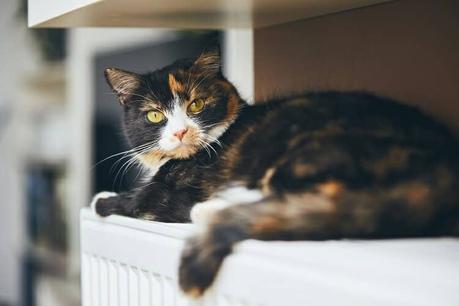
Not unlike their owners, our pets aren’t overly keen on the temperature drop during winter.
They’ll seek out warm spaces to curl up and be cosy and typically avoid cold flooring surfaces like tiles and laminate, preferring instead to lie on rugs and carpets.
In winter – and throughout the year – it’s important to keep a close eye on any pet getting too close to a source of heat like a fireplace or a radiator.
You should try and supervise them as best you can when the weather gets really cold, to avoid the risk of burns, overheating and dry skin when they are seeking out warmth.
A fire guard or screen can help to give you added peace of mind, and turning down your TRV a couple of notches should ensure radiators don’t get too hot for them to lie on top of or next to.
For cat owners whose furry friends spend lots of time outside, be sure to check car bonnets and wheel arches, on colder mornings, as it’s not unusual to find a furry friend has climbed inside for some extra warmth.
Can Dogs Experience Skin Problems In Colder Weather?
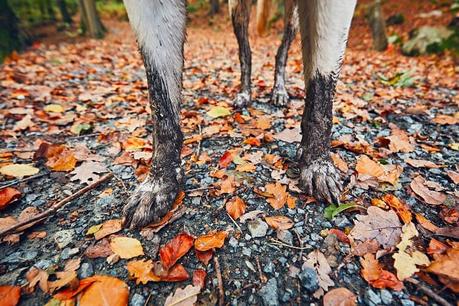
In winter, it’s easier than at any other time of the year for moisture from rain or snow to become trapped in your pet’s fur or in muddy paws.
To prevent moisture building up in your dog’s coat, try to dry their coat completely and be sure to wipe down their feet after they’ve been out on wetter days.
Wiping paws with a towel or running a little warm water over them will ensure any pieces of snow and ice are removed and will prevent damage to their sensitive foot pads.
It’s important to wipe down paws even on those days when it appears like your dog is totally dry.

In winter there’s a good chance the floor outside could have anti-freeze on it and that can be very toxic to pets.
Anti-freeze tastes very sweet to a dog, and leaving paws unchecked could see your pet licking it off and lead to severe poisoning and perhaps even death.
Try to trim the hair between paws to prevent any ice build up, and limit the chances of your pet picking up any unwanted materials that could prove fatal if left unchecked.
Skin infections are more common than you think in winter, so taking that little extra time to wipe pets down and stay on top of any issues can help to prevent more serious issues developing when you least expect it.
Can My Pet’s Arthritis Flare Up In Winter?
Much like their human companions with the same condition, the cold weather in winter can lead to pets experiencing worse arthritis symptoms than at warmer times of the year.
You might notice that they begin to struggle getting up and moving around because of stiffness and joint pain, and it’s not unusual to see pets licking affected joints, as a sign of discomfort.
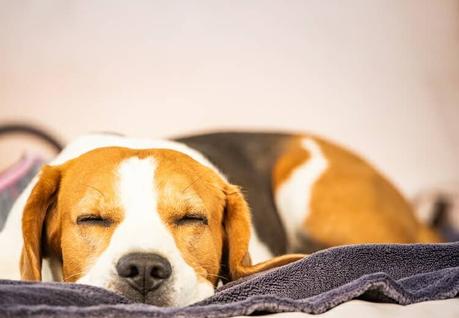
You’re probably already in touch with your vet quite regularly for ongoing treatment of your pets arthritis, so be sure to check in with them if you are concerned.
Any pet with the condition should be made as comfortable as possible in winter and kept nice and warm to help ease the symptoms of a flare up.
How Can I Protect Pets In The Colder Months?
It’s easy to panic and get upset over a pet not feeling well, and start to blame yourself and wonder if you could have done more to help.
But there are several ways to keep pets warm, dry and cosy in the winter months, so there it’s not all doom and winter gloom!
Here are just a few steps you can take to ensure your pets are comfortable when the weather isn’t at its warmest.
Keep Pets Warm & Indoors
We all appreciate a warm and cosy bed and a bit of extra protection from the elements in winter, and our dogs and cats are exactly the same.
The simplest and safest way to mitigate the risk of cold weather is to keep your pets safe and warm indoors overnight and to never leave them alone outside for long periods of time.
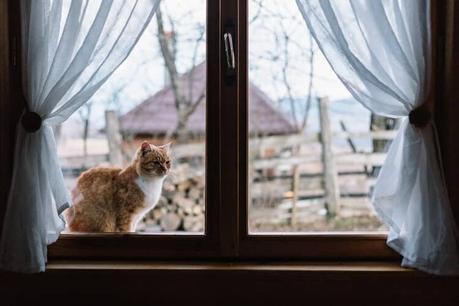
If you do have a pet that lives outside – or perhaps one that spends its time outdoors during the day – it’s important to have a kennel or enclosure that is waterproof and warm.
You should also try to lift this enclosure or kennel off the ground, as this will make the space a little warmer than without the elevation.
Fill it with warm bedding and blankets for extra comfort, and be sure that your pet has an unlimited supply of fresh water.
Get Them Some Winter Clothes
Though there are exceptions to the rule (we all know a winter shorts wearer), most of us don’t venture outdoors in winter without a decent coat that can keep away the chill.
Although your pets have a lovely furry coat of their own, winter clothing is a good addition for pets, particularly if they are older and short-haired, as these animals will lose heat quicker than long-haired and younger ones.
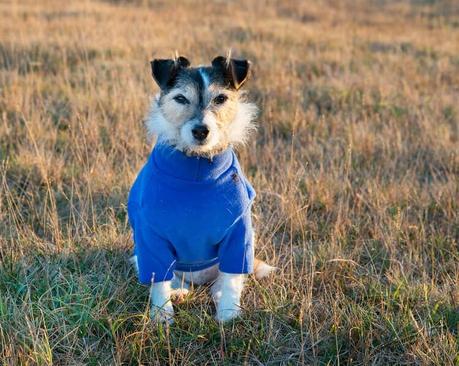
You can find jackets and waterproof coats that come with extra padding to keep dogs cosy, and others that include protection for arthritis suffering pooches too.
Be sure that any coat or jumper you buy doesn’t restrict movement and take care to purchase those that cover the animal from the base of their tail to their neck and shoulders.
To prevent overheating, remove any coat as soon as you return home and do so quickly if it’s been raining or if they’re made wet from morning frost.
Lastly, don’t force the issue with a pet that doesn’t tolerate winter clothing. Take your time to introduce any new jacket slowly and be sure your pet accepts wearing it, but if you’re not able to do so, leave it at home and avoid stressing the animal out.
Keep Up The Walks & Exercise
It’s easy to gain weight in winter by not being as active as we are when the weather is warmer, and pet’s that don’t go for as many walks because of the cold will suffer the same fate too.
It’s very important to keep walking your dog during winter, to prevent them from gaining weight and to ensure their joints remain mobile and don’t stiffen up.

You should try shorter walks and more often, to limit the amount of time spent out in the cold.
Cats may want to spend more time indoors due to colder weather too, and to avoid them gaining that extra bit of holiday weight it’s important to play with and keep them active when they do.
Some Things To Remember
If It’s Too Cold For You, It’s Probably Too Cold For Them
If you’re unsure of whether it’s too cold inside or outside for your pets, a good and simple way to tell is if it’s too cold for you.
So, have a think about leaving the heating on and setting it around 20 degrees Celsius while you’re out doing other things.
Whether you have a cat, a dog or a house rabbit, this temperature should be ideal for each of them.

Keep A Lookout In & Around Your Car
I know I mentioned it above, but it’s worth reminding ourselves again that it’s not uncommon for cats to choose to keep warm near to vehicle engines during winter.
One good habit to form – to protect your own pets and potentially those of your neighbours – is to bang on the bonnet of the car before you make a journey.
Doing this should wake any feline hitchhiker from their slumber and see them scurry off for safer and warmer climes.
Do Some Homework On Your Pets Breed
Unlike me, my wife is not built for cold weather, and some dogs and cats are better equipped to deal with the cold weather than others.
Persian cats and Husky dogs love it when it’s cold outside, whereas Dobermans and Chihuahuas tend not to be keen on cold snaps and need a little extra protection from the elements.
And shorter-nosed breeds can be at more risk in a cold snap, due to inherited breathing difficulties, so keep that in mind if you have a Pug or (like me) a Shii-Poo.
How Do You Keep Pets Warm In Winter?
I really hope that you’ve enjoyed reading about how best to keep pets warm and cosy in winter.
Do you have any other top tips you’d like to share with us for keeping pets warm?
If so, drop a comment in the section below so everyone can try it for themselves.
Until next time, stay safe, and happy (pet) heating!

